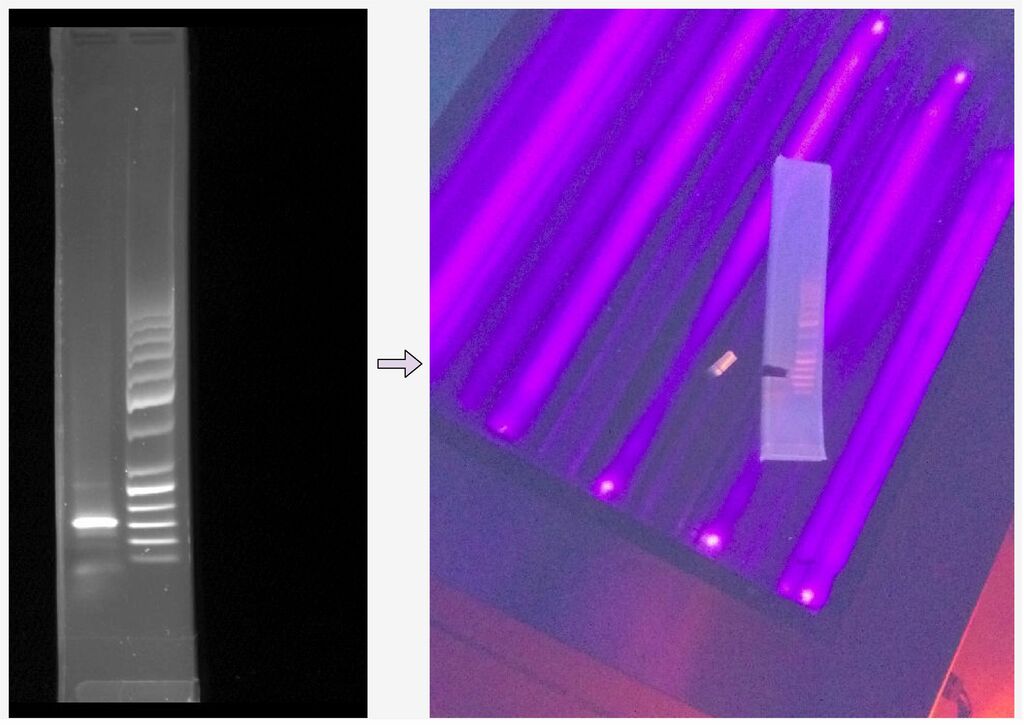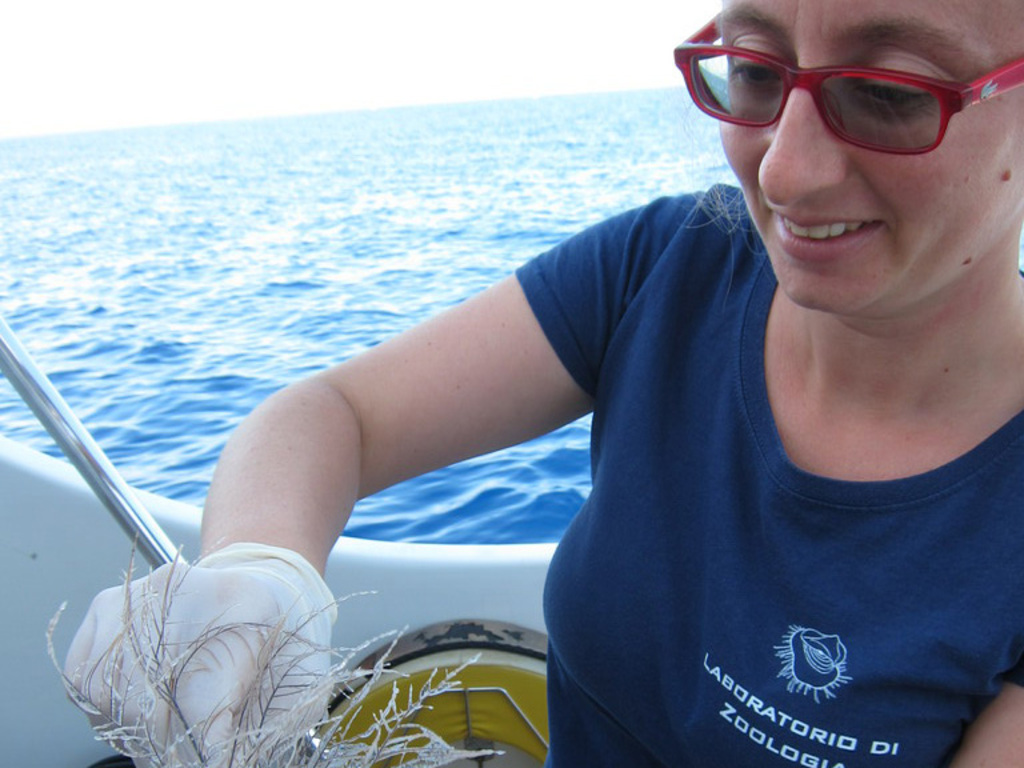Behind the science:
Population genomic structure of the black coral Antipathella subpin...
2021, May 25
Posted by Veronica Radice
“Coastal vs. offshore population structure of a Mediterranean black coral species”
What was the most challenging aspect of your study (can be anything from field, lab to analysis)?
While it might seem intuitive that the most challenging aspect of the study was the field sample collection, considering we used technical divers and ROV to collect samples from the twilight zone (55-210 m depth), it is actually the interpretation of the results that turned out to be the most challenging aspect! Due to a lack of the available information on A. subpinnata biological characteristics, it proved to be rather difficult to integrate our molecular observations / data with the physical characteristics and environmental data on the sites to fully explain why the offshore (lower mesophotic) populations differ so much from the shallow (upper mesophotic) sampling localities.
What was the most memorable moment in undertaking this study?
Sampling in the mesophotic zone poses interesting logistic and scientific challenges, but multiple collections in the same area, as those required by population genomic studies, are even more adventurous! While with the ROV is a matter of precision, with the technical divers is a matter of team work and rapidity, especially below 60 m depth. This is why the arrival onboard of 10 precise bags each with a healthy ramification was greatly celebrated and represented a turning point for this study.
What was your favorite research site in this study and why?
Santa Lucia Seamount is an amazing site. The mesophotic peak of this elevation hosts a dense antipatharian forest dominated by Antipathella subpinnata and Leiopathes glaberrima. The intricate canopy offered by these habitat-forming species hosts a rich associated fauna including both sessile epibionts, vagile fauna crawling on the seafloor and fish.
Other than your co-authors, with whom would you like to share credit for this work?
We would like to thank Fondazione Azione Mare (Eng. Guido Gay) for the help during field activities on board of Daedalus. A special thank you goes to Dr. Francesco Enrichetti and Ivano Roveri (Subbaqqueria Diving, Favignana), to Carabinieri Military Force (Centro Carabinieri Subacquei di Genova in particular Marshal Duilio Lenzini’s team), to Venceslao Zaina (Savona) and the diving center ‘‘Il Grande Blu’’ for their help during sampling procedures and pictures. Thanks to Francesco Massa (Laboratory of Oceanography, University of Genova) for the help in temperature data collection. This study was funded by the SIR-MIUR_BIOMOUNT Project (Biodiversity Patterns of the Tyrrhenian Seamounts) grant no. RBSI14HC9O (Italy) (https://biomount.macisteweb.com). Marko Terzin wishes to express his immense gratitude to the IMBRSea Master (MSc) program (International Master of Science in Marine Biological Resources), as Marko has conducted the laboratory analysis for these samples during his professional placement as part of IMBRSea, and was financially supported by the Erasmus Mundus Joint Master Degree (EMJMD) scholarship grant.
Any important lessons learned (through mistakes, experience or methodological advances)?
We consider it is of crucial importance to detect and remove any exogenous DNA from the samples to accurately infer population structuring patterns. In our case, due to small polyp size of A. subpinnata, we were unable to extract the DNA from the tissue samples alone, and instead we had to use entire polyps to obtain the DNA. This made us question the potential presence of exogenous DNA in our samples, and in fact, BLAST-ing the reads against UniProt and full NCBI databases did suggest a fraction of our reads was of microbial origin. This microbial contamination could originate from the coral microbiome (i.e. coral mucus, polyp gut content), potential human-induced errors, or the microbiome from the organisms associated to Antipathella (i.e. tiny eukaryotes). As we were unable to say how much of the population structuring that we observed was due to the ‘true’ SNP variability in the host genome, and how much of it was potentially driven by exogenous DNA, our strategy at this stage was to remove the exogenous DNA by mapping the reads against a coral genome reference to exclude those that do not align against it. However, considering the absence of a genome reference for black corals, and the very small sizes of our 2bRAD tags (only 32 bp), this is something that we were just unable to do.
Can we expect any follow-up on this work?
In terms of molecular-based approaches, we consider it would be extremely beneficial to the scientific community to reconstruct the genome of this black coral. The genome of A. subpinnata would serve as an invaluable community resource, and would be particularly useful considering that, to our knowledge, no reference genome is available for black coral species. Such a reference would allow us to answer a whole set of questions that we were just unable to ask using the short 32bp reads that we retrieved with the 2bRAD protocol. Aside from performing the quality check for exogenous DNA as explained in the previous paragraph, obtaining a reference genome would also allow us to functionally annotate the outliers (loci under selection) and study how the populations have locally adapted to the differing environmental conditions. This would allow us to say not only which populations differ (in our instance – upper mesophotic and lower mesophotic), but also how they differ in the gene content. Additional lines of investigation to pursue in future studies, in our opinion, should also be based on experimental research of A. subpinnata reproductive and larvae characteristics, in order to confirm if they really do show negative phototaxic behaviour (swimming away from the light source), and to compare the findings to data available for other black corals, such as the congeneric species A. fiordensis. This type of studies could be particularly interesting considering that the negative phototaxic behaviour is quite opposite of what was observed in larvae of tropical shallow reef coral species, which exhibit upward swimming behaviour!
Featured article:
|
|
Population genomic structure of the black coral Antipathella subpinnata in Mediterranean vulnerable marine ecosystems | article Terzin M, Paletta MG, Matterson K, Coppari M, Bavestrello G, Abbiati M, Bo M, Costantini F, Costantini F (2021) Coral Reefs 40:751–766 |
|


